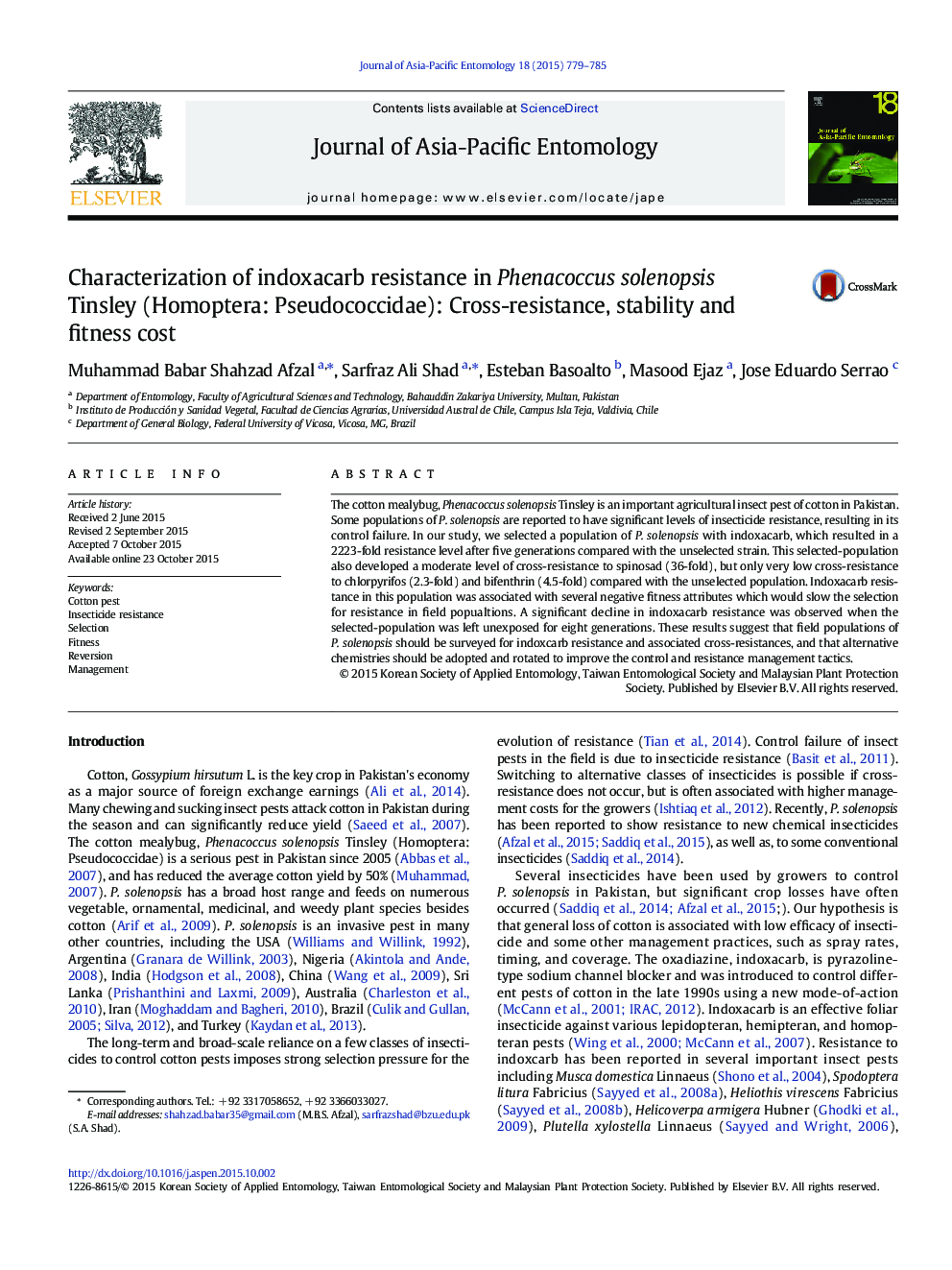| Article ID | Journal | Published Year | Pages | File Type |
|---|---|---|---|---|
| 4524408 | Journal of Asia-Pacific Entomology | 2015 | 7 Pages |
•P. solenopsis after selection of five generations developed 2223-fold resistance.•Resistance to indoxacarb in P. solenopsis was found to be unstable.•Relative fitness of resistant population was highly less as compared to unselected strain of P. solenopsis.
The cotton mealybug, Phenacoccus solenopsis Tinsley is an important agricultural insect pest of cotton in Pakistan. Some populations of P. solenopsis are reported to have significant levels of insecticide resistance, resulting in its control failure. In our study, we selected a population of P. solenopsis with indoxacarb, which resulted in a 2223-fold resistance level after five generations compared with the unselected strain. This selected-population also developed a moderate level of cross-resistance to spinosad (36-fold), but only very low cross-resistance to chlorpyrifos (2.3-fold) and bifenthrin (4.5-fold) compared with the unselected population. Indoxacarb resistance in this population was associated with several negative fitness attributes which would slow the selection for resistance in field popualtions. A significant decline in indoxacarb resistance was observed when the selected-population was left unexposed for eight generations. These results suggest that field populations of P. solenopsis should be surveyed for indoxcarb resistance and associated cross-resistances, and that alternative chemistries should be adopted and rotated to improve the control and resistance management tactics.
Graphical abstractFigure optionsDownload full-size imageDownload as PowerPoint slide
